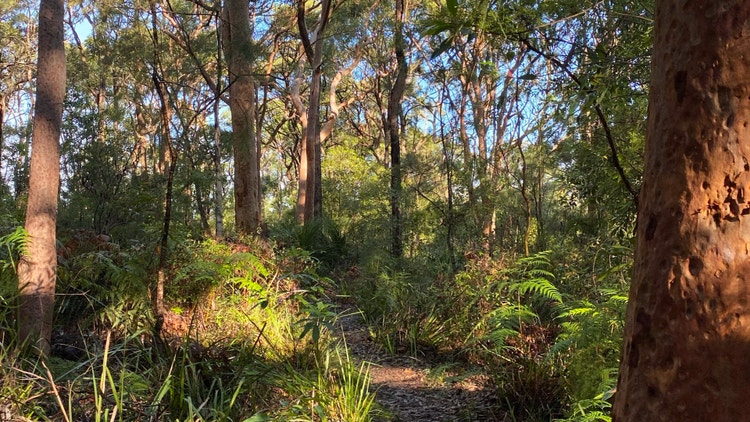

Program
Assuming the role of ecologists, students will engage in a case study on the conservation of the powerful owl - Australia's largest owl. Through a series of fieldwork investigations relating to habitat quality, biodiversity and food webs, students will examine the role of the Field of Mars Reserve in bringing powerful owls back from the brink. Students will learn to use a variety of specialised abiotic and biotic sampling techniques and fieldwork instruments that will develop their Working Scientifically skills in an authentic context. This program can be used to support an assessment task or Depth Study.
Inquiry questions
- Is the Field of Mars Reserve suitable for roosting and nesting for the powerful owl?
- Can the food web in the Field of Mars Reserve support powerful owls?
Fieldwork
Habitat assessment
Students will utilise fieldwork instruments to sample a variety of critical abiotic and biotic factors in the Field of Mars Reserve. They will use their data to evaluate the reserve's suitability as a roosting and nesting site for owls.
Animal survey and food web construction
Students will analyse pellet samples to identify the food sources of the powerful owl. They will also survey the reserve for evidence of animal presence and use the collected data to construct a food web of the ecosystem. This will enable students to determine whether the habitat can support populations of powerful owls.
Location

Field of Mars Reserve
Location information - including risk assessment and risk management advice, bus map and track overview.
Essential information
| Cost 2025 |
DoE school $26 per student – GST free Non-gov school $36 per student – GST free, minimum charge $750 |
| Cost 2026 |
DoE school $27 per student – GST free Non-gov school $37 per student – GST free, minimum charge $750 per class |
| Classes | Maximum 8 classes |
| Bring |
View Preparing for your excursion. Bring worksheet, writing equipment, clipboard, medications, low-waste food, water bottles, sunblock, hat and raincoat in a backpack. Sports uniform recommended. |
| Welfare |
Rugged bushwalking, not wheelchair accessible. May not suit recently unwell participants. For medical or special needs notify staff prior to program. |
| Extreme or wet weather | Program may be modified, postponed or cancelled due to predicted extreme temperatures, bush fire danger, heavy rainfall, high winds or dust storms. |
| Booking policy | Confirm student numbers and classes 7 days in advance. |
| Cancellation fee |
Less than 30 working school days – $600 Less than 7 working school days notice – full cost Weather or fire danger cancellation – $0 |
| Worksheet |
Schools are responsible for printing student worksheets. |
| Teacher resources | Teacher programming folder |
| Supporting resources |
Eucalypt forest - Digital Book for iPads and Macs |
| Time | Class A, B | Class C, D |
| 9.30 - 10.00 |
Introduction and fieldwork preparation Food break and toilets |
|
| 10.00 - 11.30 | Habitat assessment | Food web survey |
| 11.30 - 12.00 | Food break and toilets | |
| 12.00 - 1.30 | Food web survey | Habitat assessment |
| 1.30 - 2.00 | Food break and toilets | |
| 2.00 - 2.15 | Conclusion and depart | |
Science 7-10 Syllabus (2023)
Outcomes
A student:
- SC4-LIV-01 describes the role, structure and function of a range of living systems and their components
- SC4-WS-02 identifies questions and makes predictions to guide scientific investigations
- SC4-WS-05 uses a variety of ways to process and represent data
- SC4-WS-08 communicates scientific concepts and ideas using a range of communication forms
Content
Living systems
Ecosystems
- Identify the components that make up an ecosystem
- Investigate the interactions of biotic and abiotic factors in an ecosystem
- Identify how matter and energy are cycled through an ecosystem
- Create a food web and ecological energy pyramid based on local area observations to describe how matter and energy move through an ecosystem
- Examine secondary-source data on the factors that change populations, including the introduction of a new species to an ecosystem, to identify trends, patterns and relationships, and draw conclusions
Science and Technology 7-10 Syllabus © NSW Education Standards Authority (NESA) for and on behalf of the Crown in right of the State of New South Wales, 2023



